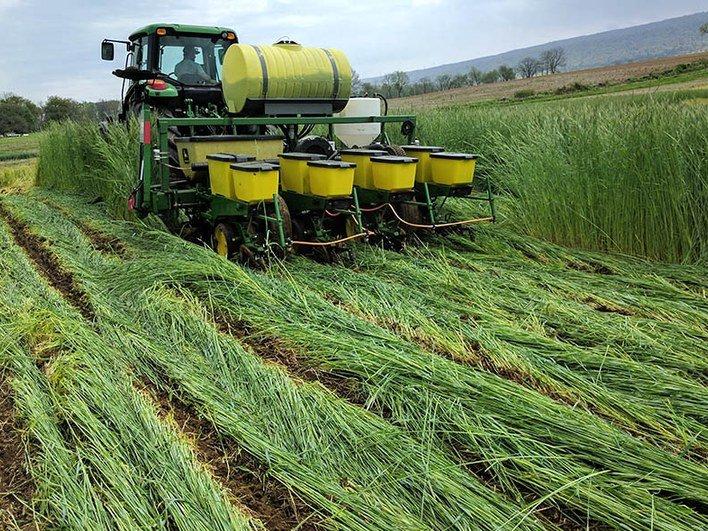Power of Cover Crops


In the vast expanse of agriculture, an often underestimated hero is quietly revolutionizing farming practices: the cover crop. Beyond merely preventing soil erosion, these unsung champions bring a multitude of advantages to both the environment and crop yields. Let's delve into the verdant world beneath our feet and explore the benefits of incorporating cover crops into agricultural landscapes.
Cover crops are natural fertilizers, enriching soil fertility by fixing nitrogen and increasing organic matter content. Through symbiotic relationships, legumes, for example, form partnerships with nitrogen-fixing bacteria, infusing the soil with this vital nutrient. The subsequent decomposition of cover crop residue further improves soil structure, water retention, and overall fertility.
A primary function of cover crops is their role as a protective shield for the soil. Their robust root systems anchor the soil, acting as a defense against erosion caused by wind and water. This protective measure preserves valuable topsoil and minimizes the risk of nutrient runoff into nearby water bodies, thus promoting water quality.
In addition to their soil-enhancing qualities, cover crops act as natural weed suppressants. By out-competing unwanted plants for sunlight, nutrients, and space, they offer a sustainable alternative to synthetic herbicides, fostering an eco-friendly approach to weed control.
Beyond weed management, cover crops contribute to natural pest control. Certain varieties release compounds that repel or disrupt the life cycles of pests and pathogens, diminishing the reliance on chemical pesticides and promoting a healthier, more balanced agroecosystem.
Integrating cover crops into crop rotations enhances biodiversity and disrupts the cycles of pests and diseases. Different species of cover crops bring unique benefits, creating a more resilient and productive agricultural system.
The extensive root systems of cover crops also play a crucial role in improving water management. Enhancing water infiltration and reducing surface water runoff contribute to water conservation and mitigate the impact of extreme weather events, such as floods or droughts.
In the context of climate change, cover crops play a vital role in carbon sequestration. As these plants undergo photosynthesis, they absorb carbon dioxide from the atmosphere, storing carbon in their biomass and root systems. This stored carbon becomes a critical component of soil organic matter, contributing to reducing greenhouse gas emissions.
In pursuing sustainable agriculture, incorporating cover crops emerges as a powerful strategy with far-reaching benefits. These green companions are not merely a patch of vegetation but key players in building a more resilient and sustainable future for agriculture. As farmers and researchers continue to uncover the secrets hidden beneath the cover crop canopy, it becomes clear that these plants are catalysts for positive change in the agricultural landscape.
